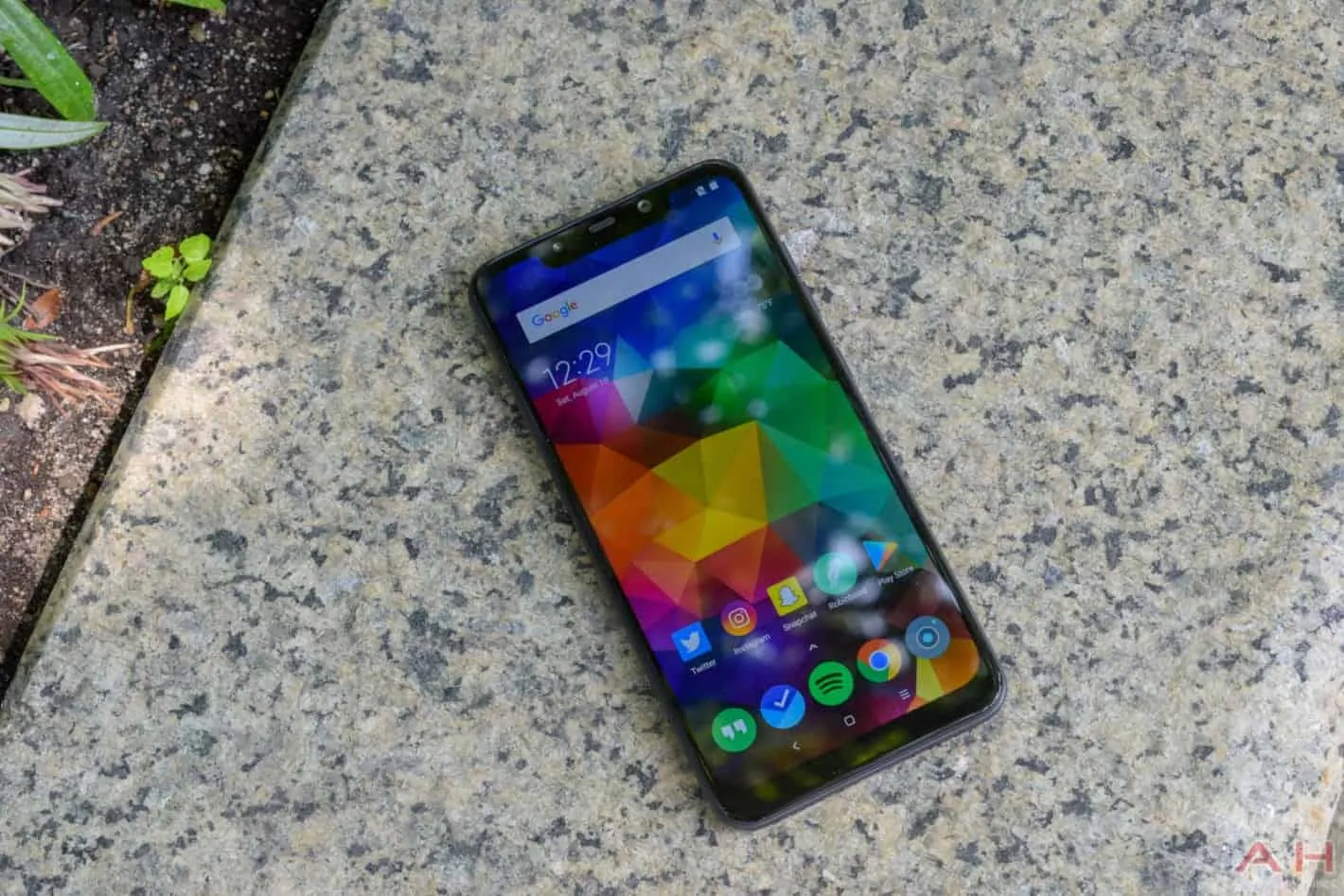Xiaomi has created a phone that is focused on three key areas: Performance, Camera & Battery Life. And it succeeds in all three areas, while keeping the price fairly low.
Xiaomi introduced the first smartphone under its new sub-brand, Pocophone (it’ll be “Pocophone by Xiaomi” Globally and “Poco by Xiaomi” in India). The first smartphone, the Poco F1, is a device that is focused on three areas: Performance, Speed and Price. It is going to be priced under Rs. 30,000 in India for the highest-end model, which is around $430 USD. Under-the-hood, the Poco F1 is packing the high-end specs you’d expect from Xiaomi. That includes a Snapdragon 845 chipset with 6GB of RAM and 64GB or 128GB of storage (or 8GB of RAM and 256GB of storage), along with a dual-camera setup on the back consisting of a 12-megapixel main sensor and a 5-megapixel secondary sensor. This is all powered by a 4000mAh capacity battery that should keep the device running all day long.
What is Pocophone
Pocophone is a new sub-brand from Xiaomi that is really targeting a similar demographic that Honor and OnePlus already target. Pocophone does not have a definition, even though its Twitter handle is attempting to get users to figure out what it stands for. What Xiaomi is aiming for here, is “a powerful smartphone with the technologies that truly matter”, according to Jai Mani, who has been heading up this project. Mani also stated that “as a small outfit within Xiaomi, we have the freedom to start from scratch, zeroing in on the product choices that matter.” If a startup on Kickstarter tried to do this, they would not be successful, and that’s because of all of the overhead and R&D needed to hit this price point. And that’s exactly what the Poco F1 is. This brand is going to be used in Xiaomi’s international markets, and not in China – at least for now. So you can expect some slight changes to MIUI on Pocophone devices, compared to Xiaomi smartphones that are sold in China – like the Mi MIX 2S and Mi 8.
Hardware
Xiaomi’s hardware on the Poco F1 isn’t that exciting, especially if you’ve been following its other flagship smartphones like the Mi MIX 2S and Mi 8, which use glass, ceramic, and under-display fingerprint sensors. Instead, Xiaomi decided to focus more on the specs and performance of the phone, than using fancy materials for the build here. The Poco F1 is available with two backs – a polycarbonate back that is available in black, blue and red, and a kevlar back. The front of the phone is nearly all display, with a 19:9 aspect ratio and a full HD+ resolution. There is a slight camera bump on the back, though it is barely noticeable. That is likely because of the 4000mAh capacity battery that is included here.
The back of the Poco F1 is slightly curved, so that it does fit in the hand quite nicely. Of course, the kevlar on the back of our model here, also makes it easy to hold onto. Unlike those other metal and glass smartphones on the market right now. Which is a really good thing, seeing as the last thing you would want to happen is to drop your phone. This is a rather thick phone, and that is due to, again, the battery being so large, as well as the liquid cooling for the Snapdragon 845 to keep the phone nice and cool. That actually makes the Poco F1 feel really nice in the hand, and less likely to break when holding it or playing games.
Performance on the Poco F1 is about what you’d expect from a Snapdragon 845 chipset and 6GB of RAM. Everything is very snappy here, with no slowdowns in sight. Even gameplay is pretty good. We spent a good amount of time playing Asphalt 9: Legends on the Poco F1, and it held up pretty nicely with the game, even after hours of playing, and the battery didn’t suffer to much either. So if you’re worried about performance on a smartphone that’s under $500 (and realistically it’ll start at under $400), don’t be. This one has no issues at all with performance.
Software
The Poco F1 is running on MIUI 9.6 right now – though MIUI 10 is available in Beta on the phone, we just aren’t running it. But when you pick up the phone, it won’t really look like MIUI. This is because Xiaomi has developed its own launcher for the Poco F1. It is designed for international markets, and includes things like an app drawer. Something that many people in the west complain about quite often with Xiaomi smartphones. The team also worked on the notification shade here, and made it look similar to the toggles in Android Pie. Notifications are still the typically MIUI-style, though currently, there’s no option to show notification icons in the status bar – hopefully that’s just a bug in pre-release software here, that will be fixed before launch.
This launcher that Xiaomi has created, is going to be available in the Google Play Store, and can be installed on other Xiaomi smartphones in the future. Xiaomi did tell us that if the launcher is popular enough, they may port it over to work with other smartphones in the future. But currently, that’s not the plan. The rest of the software is the standard MIUI. Which is still jampacked with features. MIUI 9.6 is still based on Android 8.1 Oreo, and not Android 9 Pie, which is not a surprise, and with MIUI being such a heavy skin, users likely wouldn’t notice the difference anyways. But it will be getting Android 9 Pie in the near future.
Camera
It’s still early to be talking about the camera on the Poco F1, but it does seem to be pretty decent. It does quite well in most circumstances, but there are times where the camera will overexpose the background, particularly in Portrait Mode. There are also times where the picture will come out blurry – which sounds like it could be from the shutter taking longer than it should. But, these are things that can be fixed in software updates, and likely will be fixed in software updates. So there’s no need to get too upset right now about that, seeing as this is still pre-release software.
In broad daylight, however, you can get some really great photos. We took a few while we were in New York City, and they came out really good. Of course that was with plenty of sunlight, so that is to be expected. For the full review, we’ll be testing out the camera a bit more in-depth, and see just how good – or how bad – it actually is.
Battery
Xiaomi was touting the large battery capacity on the Poco F1, and for good reason. It’s one of the few phones out there that has a 4000mAh capacity battery inside – besides the Galaxy Note 9. The 4000mAh capacity battery is going to keep you going all-day long on a single charge and then some, which is pretty impressive. During our usage – which included the Poco F1 running on WiFi exclusively, since it doesn’t support US networks – we were able to get two full days on a single charge, and that included some heavy usage as well. Coming out at nearly seven hours of on-screen time, and there was still more than 20-percent charge left. That’s pretty impressive, but it’s worth mentioning that this is still on pre-release software, so this might get even better once the device is actually made available for purchase. We’ll of course talk more in-depth about the battery in our full review.
Wrap Up
The Poco F1 from Xiaomi is one heck of a smartphone. If you didn’t know the price here, you would think that this was a $600 or more smartphone. But in actuality it’s going to be under $400 USD (converted from Indian Rupees) for the 6GB/64GB and 6GB/128GB model, with the 8GB/256GB model coming in at around $430. That is a really insane price for this smartphone. Which makes you wonder who Xiaomi is trying to compete with here. Well, it’s Honor and OnePlus, the sub-brands of other popular smartphone makers – Huawei and OPPO (technically, BBK). And for a first attempt, it seems to be pretty solid. Of course, these are still early impressions, so that could change when it comes to our full review in a few weeks.







